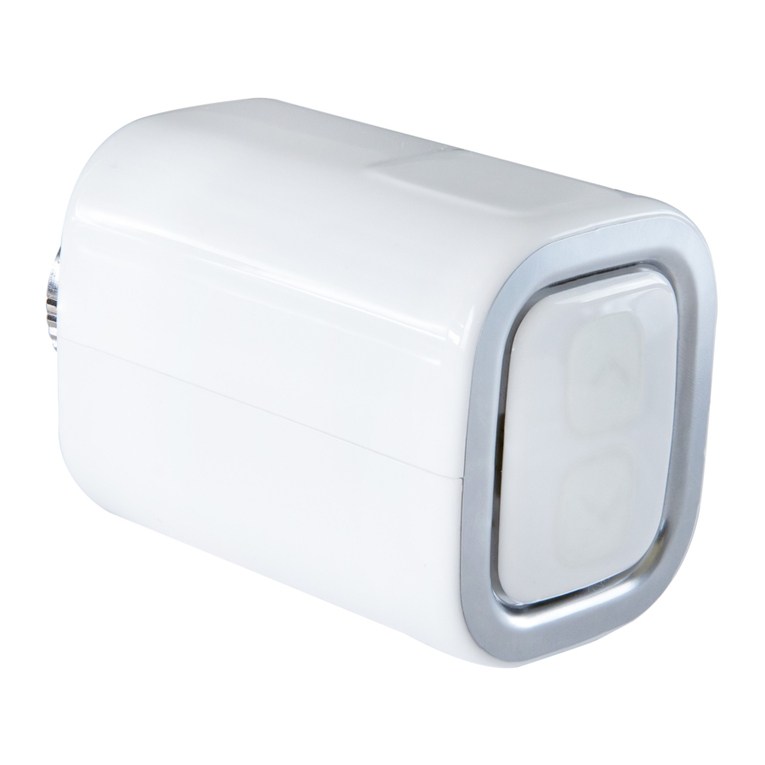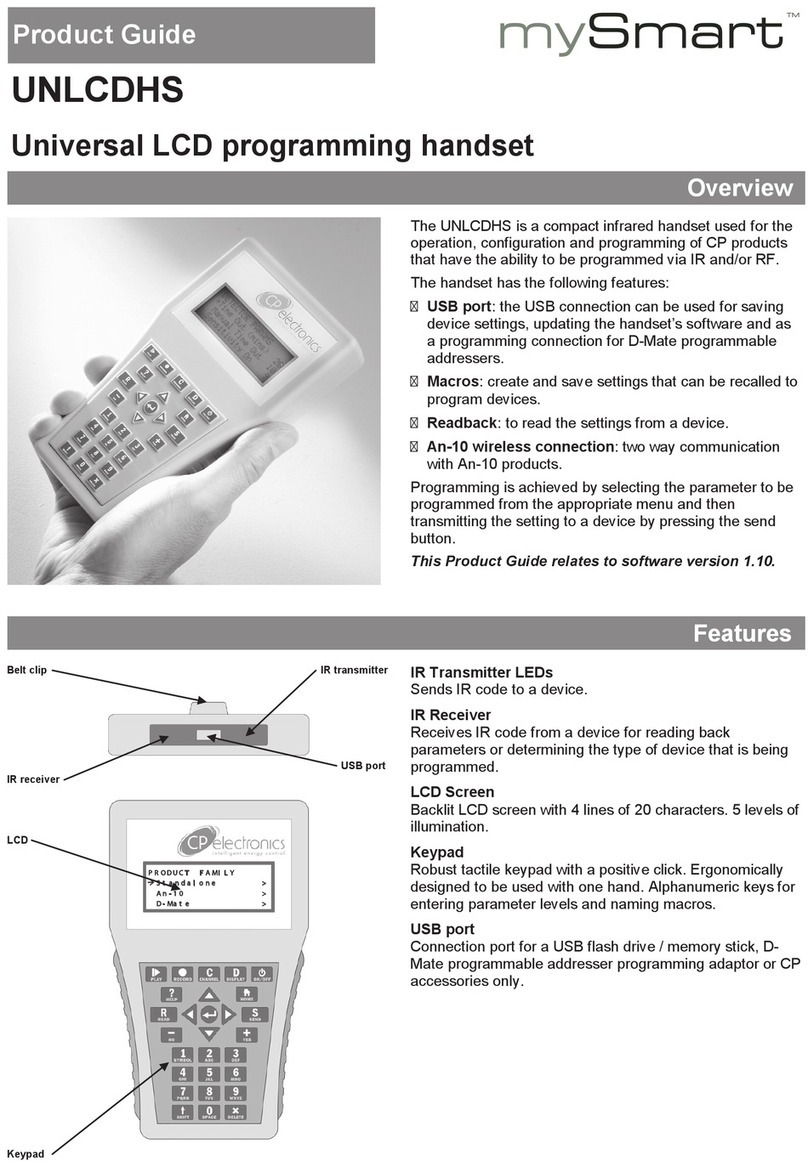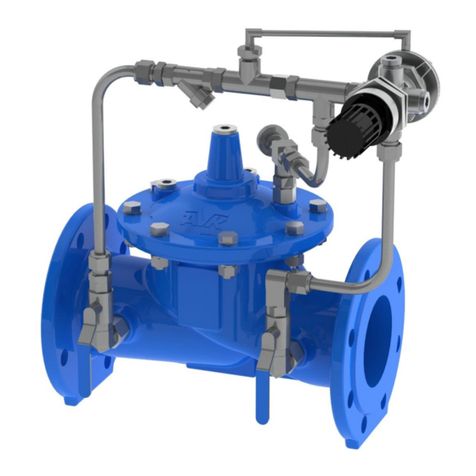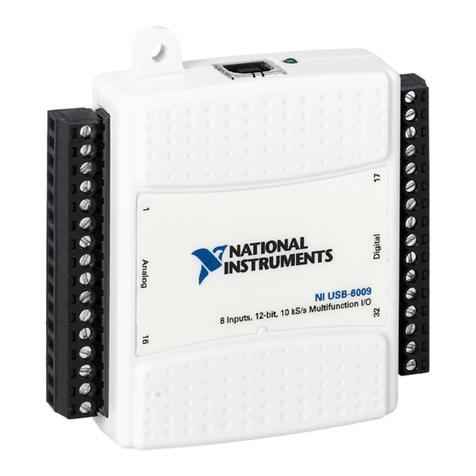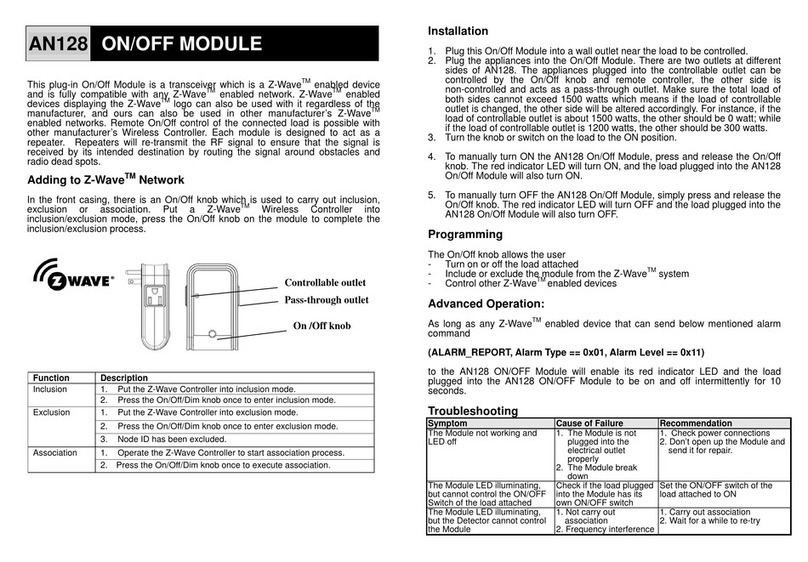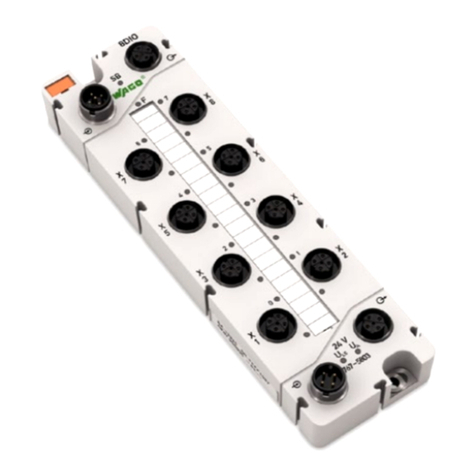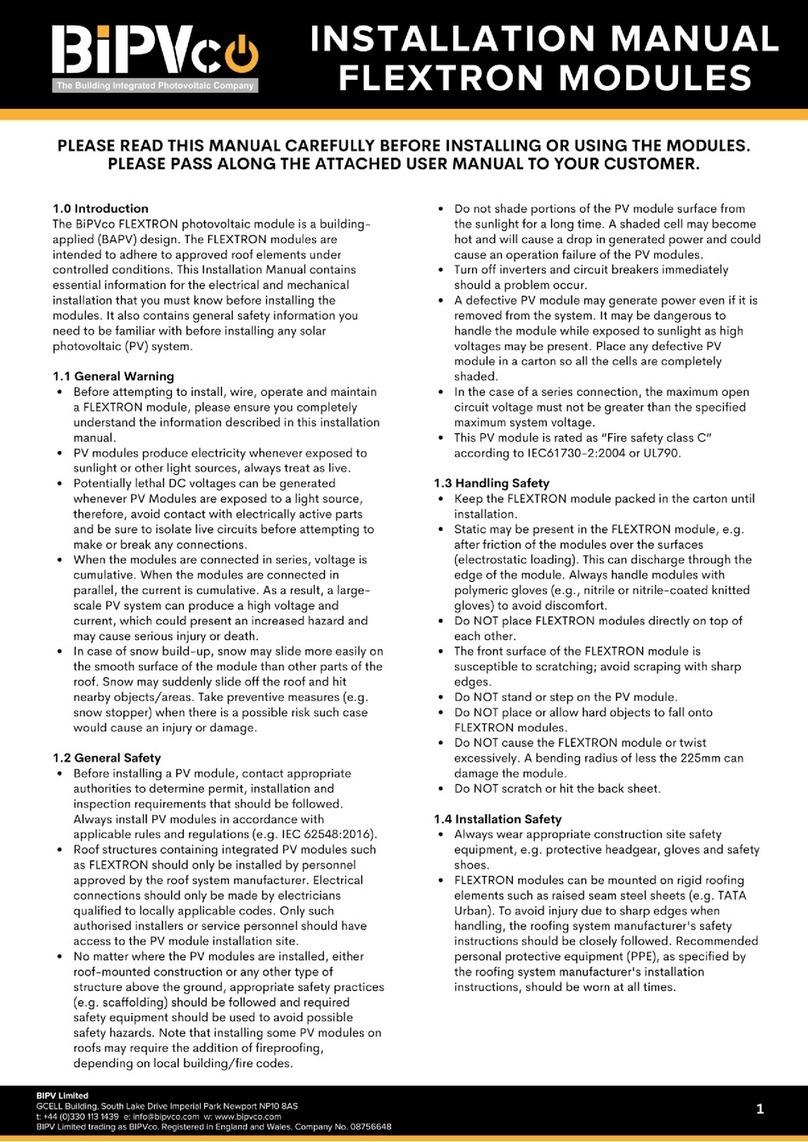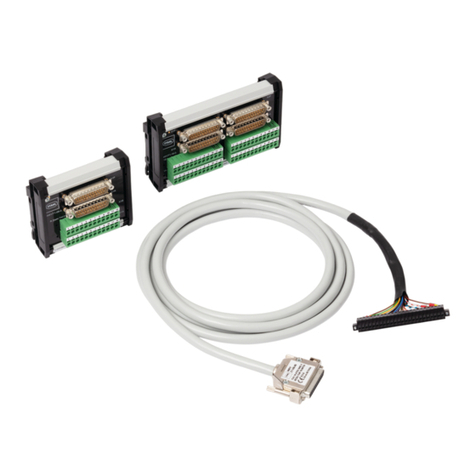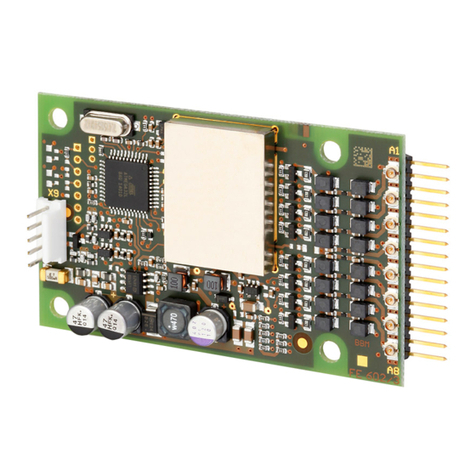Flow Safe F84L Series Instruction Manual

F84L SERIES
SPRING-OPERATED
LIQUID RELIEF VALVE
PLASTIC-SEATED
-2 Orifice (WITH THREADED BONNET)
-3, -4, -8, -G, -J Orifices (WITH BOLTED BONNET)
INSTALLATION,
OPERATION, & MAINTENANCE MANUAL
Revision: J
Date of Issue: Oct. 6, 2021
Approved by: jwo GG
Engineering Projects Dir. Sr. Design Eng.

INSTALLATION, OPERATION, &
MAINTENANCE MANUAL
TITLE: F84L Series Liquid Relief Valve Rev. J Page 2 of 18
TABLE OF CONTENTS
Topic Page
1.0 General............................................................................................. 3
2.0 Description, Operation, Service Envelope, Installation, & Startup
2.1 Description / Operation..................................................................... 4
2.2 Service Envelope.............................................................................. 5
2.3 Installation......................................................................................... 5
2.4 Startup .............................................................................................. 6
3.0 Valve Maintenance
3.1 Disassembly...................................................................................... 7
3.2 Reassembly...................................................................................... 7
4.0 Valve Testing and Adjustment
4.1 Test Equipment................................................................................. 8
4.2 Setting / Adjustment Tolerances....................................................... 8
4.3 Set Pressure Adjustment .................................................................. 9
4.4 Seat Tightness.................................................................................. 9
4.5 Lift Lever Operation .......................................................................... 10
5.0 Accessories....................................................................................... 11
6.0 Troubleshooting Guide ..................................................................... 12
Illustrations
F84L-2 Series “Micro” 2-PC Body Assembly (Threaded Bonnet) ................14
F84L-3 / -4 / -8 Series “C” Body Assembly (Bolted Bonnet, Std.) ................15
F84L-3 / -4 / -8 Series “X” Body Assembly (Bolted Bonnet, XL) ................. 16
F84L-3 / -4 Series “Z” Body Assembly (Bolted Bonnet, XXL) …………….. 17
F84L-G / -J Series “D” “E” “X” Body Assembly (Bolted Bonnet) .................. 18

INSTALLATION, OPERATION, &
MAINTENANCE MANUAL
TITLE: F84L Series Liquid Relief Valve Rev. J Page 3 of 18
1.0 GENERAL
1) This manual is intended to provide users with direction and guidance for the maintenance of
FLOW SAFE F84L Series liquid relief valves. This manual indicates the proper method of valve
disassembly, soft goods replacement, and valve reassembly. FLOW SAFE provides this manual
as a guideline and reference only. It is not intended to serve as a training manual or
manufacturing guide. FLOW SAFE assumes no responsibility for personal or property damage
that may occur in conjunction with this manual.
2) FLOW SAFE recommends that all valves be placed on a regular maintenance schedule that
includes the routine replacement of softgoods. FLOW SAFE recommends softgoods
replacement every three years but cautions that each customer make their own determination
and set their own schedule based upon use and environment. FLOW SAFE believes that when
maintenance and reassembly is performed as outlined in this manual there is no safety hazard.
During routine maintenance the internal components of the valve should be inspected for damage
or abnormal wear. The valve should also be inspected for excessive corrosion. A corrosion
allowance of 0.06” (1.5 mm) is designed into all carbon steel components subject to corrosion.
Operating the valve with corrosion exceeding this allowance is not recommended.
Cycling the valve at least once a year is considered to be good practice to verify operation and to
confirm that parts are not seized.
3) When a new valve leaves FLOW SAFE, it has been manufactured and tested by trained and
experienced personnel. When you remove a valve from your system and perform the
maintenance tasks that are outlined herein you will need proper training.
Do not attempt to accomplish these tasks without adequate training and understanding of the
valve operation.
4) Any and all stated or implied warranties that are in effect during the purchase of a new FLOW
SAFE valve are null and void once the valve has been disassembled by someone other than
approved FLOW SAFE personnel.
All repair and resetting of "UV"-stamped safety relief valves should be performed either by FLOW
SAFE, Inc., or by a National Board-certified valve repair shop holding a "VR" (Valve Repair) or
“T/O” (Test Only) stamp.
5) It is highly recommended that all instructions herein be read in full prior to any assembly,
disassembly, or operation of this equipment.
6) The noted manufacturer’s standard lubricants should be used only if compatible with process fluid
and application.
7) Specific design details described in this document are subject to change without notice.
8) Should the need arise for general assistance, contact the FLOW SAFE Sales or Service
department at (716) 662-2585 or (800) 828-1036 in Orchard Park NY or (832) 678-2070 in
Houston TX. For more detailed technical assistance, contact the FLOW SAFE Engineering
department at (716) 662-2585.

INSTALLATION, OPERATION, &
MAINTENANCE MANUAL
TITLE: F84L Series Liquid Relief Valve Rev. J Page 4 of 18
2.0 DESCRIPTION, OPERATION, SERVICE ENVELOPE,
INSTALLATION, and STARTUP
2.1 DESCRIPTION / OPERATION
CLOSED OPEN
The FLOW SAFE F84L Series liquid relief valve is a direct-acting spring-loaded relief valve, suitable for
liquid service. The Type F84L is plastic-seated with elastomeric seals.
Orifice sizes are available in -2, -3, -4, -8, -G, and -J with set pressures from 30 to 24,277 psig (depending
on the orifice size).
Blowdown is nonadjustable, designed to be a maximum of 20% for the -3, -4, -8, -G, and –J. For the -2
orifice, blowdown may approach 30-35% whether the valve pops fully open or partially opens at low flow
rates.
OUTLET
SPINDLE
SEAT
(PLASTIC)
(Balanced against
backpressure)
HUDDLING
CHAMBER
Fully open
at 7.5%
over
pressure
BODY
PRESSURE
ADJUSTMENT
(PA) SCREW
INLET
SPRING
PRESSURE ASSIST
DRAG SEAL
(ELASTOMER)
BONNET
LIFT
ATMOSPHERIC
VENT
S
TATIC
BACKFLOW SEAL
(ELASTOMER)
BUSHING

INSTALLATION, OPERATION, &
MAINTENANCE MANUAL
TITLE: F84L Series Liquid Relief Valve Rev. J Page 5 of 18
2.2 SERVICE ENVELOPE
BODY
ORIFICE SIZE
SIZE
-
2
-
3
-
4
-
8
-
G
-
J
Minimum
Set
Pressure,
psig (barg)
All 50
(3.45) 50
(3.45) 30
(2.1) 30
(2.1) 30
(2.1) 30
(2.1)
Maximum
Set
Pressure,
psig (barg)
Micro (2-pc.) 24,277
(1674) --- --- --- --- ---
C, D, E
w/ standard bonnet --- 720
(49.6) 720
(49.6) 720
(49.6) 668
(46) 298
(20.5)
C, D, E
w/ XL
b
onnet
--- 4292
(296) 4292
(296) 4292
(296) 3705
(255) 2700
(186)
C Body
w/
XXL
bonnet
--- 8382
(578) 8382
(578) --- --- ---
2Confirm service / application with factory.
3-65 (-54) with low temp nitrile
2.3 INSTALLATION
Prior to installation, check that the set pressure on the nameplate is as required, and meets the system
requirements.
The F84L Series liquid relief valve should be installed in the upright position per the figure on the next
page, as close as possible to the pressure source, to minimize pressure losses between the system and
the valve. This should be in accordance with accepted piping practices, as set forth in the API 520 Part II,
which recommends that inlet piping pressure losses should not exceed 3% of the set pressure when the
valve is flowing.
The valve discharge pipe should be sufficiently large so that backpressure does not exceed system
design conditions when relieving. High backpressure may diminish capacity below the value assumed
during the valve’s sizing and selection process.
SOFT GOODS
Temperature, °F (°C)
F84L Seats (Plastic)
MIN.2MAX.
Teflon ® (PTFE) -65 (-54) 400 (204)
Kel-F (PCTFE) -65 (-54) 400 (204)
Polyimide or Polyamide-imide: Vespel ®, Duratron ®, or equal -65 (-54) 500 (260)
Polyetheretherketone (PEEK) 0 (-18) 525 (274)
F84L Spindle Seals (Elastomer)
MIN.2MAX.
Buna-N -30 (-34) 3275 (135)
Fluorocarbon: Viton ® or equal -30 (-34) 400 (204)
Ethylene propylene (EPR/EPDM) -65 (-54) 325 (163)
Perfluoroelastomer: Kalrez ®, Chemraz ®, or equal 0 (-18) 525 (274)
Polyurethane -60 (-54) 225 (107)

INSTALLATION, OPERATION, &
MAINTENANCE MANUAL
TITLE: F84L Series Liquid Relief Valve Rev. J Page 6 of 18
The F84L Series valves are balanced against superimposed backpressure, so that the set pressure will
not change with backpressure.
Make sure that the inlet piping/flanges have an opening equal to or greater than the valve's inlet diameter.
Make sure that there are no obstructions like gaskets, fittings, etc., in the flow path to restrict the flow or
cause chatter. Also, misaligned piping connections may result in leaks or induce stresses in the valve
assembly that interfere with good operation. Discharge stacks exposed to the elements should be
configured so as to avoid the accumulation of ice and snow.
If a block valve is used below the relief valve, it should be opened before pressurizing the system. This
block valve should be locked open during normal system operation.
Use only the wrench flats on the valve inlet bushing, taking care not to make any wrench marks, for
tightening and installation. Do not wrench on the cast body or bonnet.
2.4 STARTUP
Foreign particles or dirt can damage the valve and make it inoperative. Prior to installation, clean out the
piping thoroughly. If the valve is not installed immediately, inlet and outlet connections should be
protected and covered.
Pressure can be applied to the valve as system pressure increases, or by opening the block valve (if
there is one) after the system has attained operating pressure. Verify the valve seat is leak-tight, in
accordance with Section 4.4.
The valve is now ready for service. Inspection and maintenance should be performed on a regular basis,
typically once a year, depending on the service conditions.
INLET
OUTLET
F84L SERIES
TYPICAL INSTALLATION
BLOCK VALVE

INSTALLATION, OPERATION, &
MAINTENANCE MANUAL
TITLE: F84L Series Liquid Relief Valve Rev. J Page 7 of 18
3.0 VALVE MAINTENANCE
WARNING: It is extremely dangerous to attempt to disassemble any valve while it remains in
service with incoming line pressure. Also, improper assembly of the valve may
result in leakage or failure of the valve when returned to service.
3.1 DISASSEMBLY
(See Illustrations on Pages 14 through 18)
1) Remove the valve from service, or adequately and safely block the incoming pressure before
disassembling the valve and performing maintenance.
NOTE: If bushing remains connected to the system piping, then the valve's internal
components (spring, washer, spindle) will fall out of the body as it is removed.
2) Cut and remove the lockwire.
3) For valves with lift lever, first remove the lock nut and lift lever. Slowly unscrew the bushing,
holding shaft. Unscrew the lift lever housing.
4) Remove the pressure adjusting (PA) screw cap. Measure the height of the PA screw above the
body and record value. For valves with lift lever, measure the distance from the jam nut to top of
threaded lifting rod. Then remove jam nut and lift nut.
5) Loosen the PA screw lock nut. Loosen PA screw until the spring load is removed.
6) a.) Bolted-bonnet valves: Unscrew and remove the four bolts, nuts, and lockwashers between
the body and bonnet. Remove spring washer(s) and spring, and lifting rod subassembly (if
applicable). Remove the bonnet, including attached bonnet base if an older F84L-4 or –8 “large
body,” where these two pieces are joined by a retaining ring.
b.) F84L-2 Two-piece Micro body: Unscrew the bonnet from the body. Remove spring washers
and spring.
7) For the –G and –J orifices, make sure the four small pipe plugs are securely in place in the top of
the body.
8) Unscrew and remove the bushing, using wrench flats.
9) Remove the spindle assembly.
10) a.) For the bolted-bonnet valve sizes and -2 with retained seat, remove retainer screw, retainer,
and seat. Existing O-rings may be removed by carefully prying them out of the spindle grooves.
b.) For the F84L-2 with push-in seat, remove the seat by prying it out with a sharp-edged tool or
small screwdriver. It may first need to be drilled through the center using a 1/16” or 3/32” diameter
drill bit. To remove the two spindle seal O-rings, which are situated in small grooves in the body, a
sharp pointed metal tool must be used to carefully pry them out. Try not to gouge the surrounding
metal surfaces.
11) Replace the softgoods per the instructions in Section 3.2.
Replacement parts may be found in the appropriate FLOW SAFE softgoods kit, as listed
in Section 5.0 of this manual.
3.2 REASSEMBLY
1) Reassembly of these valves is basically the reverse of the disassembly.
NOTE: Care must be taken in the handling of all items, particularly softgoods.
2) Inspect condition of nozzle seating surface and spindle guide surface inside body. Buff out or
polish any scratches that may interfere with a good seal, or replace part if necessary.
3) Apply Neverseez or DuPont Krytox (for oxygen service) to all straight threads.

INSTALLATION, OPERATION, &
MAINTENANCE MANUAL
TITLE: F84L Series Liquid Relief Valve Rev. J Page 8 of 18
4) Install the seat dry. For bolted-bonnet valves, insert the plastic seat, seat retainer, and retainer
screw into the spindle. Apply Loctite or Vibra-tite to retainer screw threads. As screw is tightened,
ensure that it meets firm resistance against the locking Heli-Coil in spindle. For the F84L-2 with
push-in seat, the radiused or chamfered edge of the seat must be facing out; push the seat
squarely into the spindle cavity using a clean finger or other soft surface. Do not nick or scratch the
sealing edge.
5) a.) Bolted-bonnet valve sizes and -2 with retained seat: Carefully install new drag seal / spindle
seal(s) in grooves on spindle. Desco 600 grease should be applied to the outside of these O-
rings, except that, for all -2 valves and –3, –4, and –8 valves below 100 psig, Dow Corning
Molykote 33 or equivalent should be used.
b.) F84L-2 with push-in seat: Carefully push new spindle seal O-rings lubricated with Dow
Corning Molykote 33 into the body grooves using a blunt-tipped instrument or small screwdriver.
Even though they may initially twist, they can be gently worked back and forth until they drop into
the groove.
6) Insert the spindle assembly into the body, making sure that it travels freely on the guide surface.
7) Position the bushing seal on the appropriate shoulder of the bushing.
8) Screw the bushing / seal assembly into the body and tighten using the wrench flats.
9) Assemble the spring washer(s), spring, and lifting rod subassembly (if applicable) into the bonnet.
10) a.) For bolted-bonnet valve sizes, assemble the bonnet, adapter plate (for XXL “C” bonnet),
bolts, nuts, and lockwashers to the body. Torque main bonnet bolts to following value:
12-15 ft-lbs -- 3/8-in bolts marked “B8” on ‘C’ body
25-30 ft-lbs -- 1/2-in bolts marked “B8” on ‘D’ or ‘E’ body
65-70 ft-lbs -- 1/2-in bolts marked “B8” on ‘D’ or ‘E’ body
b.) For the F84L-2, ensure that the body and bonnet threads are clean. Then, firmly screw the
bonnet onto the body.
11) Screw the PA screw and lock nut into the top of the body, with top of screw at previously recorded
value.
12) For lift levers, assemble PA screw and lock nut around lifting rod. Then reassemble the lift nut
and jam nut to previously recorded position. Assemble the lift lever housing and then the
bushing, crush rings, shaft, lift lever, and lock nut.
13) Ensure that the rear bolt and seal are secured in the back of the body (except F84L-2).
14) The valve is now completely assembled and ready to be tested. See Section 4.0.
4.0 VALVE TESTING AND ADJUSTMENT
The following tests and adjustments are necessary for F84L liquid service valves: set pressure and seat
tightness. Blowdown is not adjustable, and is fixed at approximately 15 - 20% (20 – 35% for -2 orifice
size) of set pressure.
4.1 TEST EQUIPMENT
Where practical, the F84L should be set using water or other suitable liquid. To obtain full-flow conditions
and observe blowdown, a sufficiently large pressure vessel will be needed. Setting the valve on air may
damage the seat and is not recommended.

INSTALLATION, OPERATION, &
MAINTENANCE MANUAL
TITLE: F84L Series Liquid Relief Valve Rev. J Page 9 of 18
4.2 SETTING / ADJUSTMENT TOLERANCES
Set Pressure: Set Pressure Tolerance
> 70 psig + 3% of specified set pressure
< 70 psig + 2 psi
Seat Tightness: There should be ZERO leakage with inlet pressure at or below:
For F84L -3, -4, -8, -G, -J:
0.90 x set pressure, if set pressure > 100 psig
0.80 x set pressure, if set pressure < 100 psig
For F84L-2, LP (retained seat):
0.90 x set pressure, if set pressure > 300 psig
0.80 x set pressure, if set pressure < 300 psig
For F84L-2, HP (push in seat):
0.90 x set pressure, if set pressure > 500 psig
0.80 x set pressure, if set pressure < 500 psig
4.3 SET PRESSURE ADJUSTMENT
NOTES: 1. Set pressure is defined as 93% of the “gush” (pop) pressure. This corresponds to
the first steady stream if valve is being set on a low-capacity test system.
2. If the set pressure is being changed, then the spring, spring washer, PA screw, and
bonnet may need to be changed. Consult the factory or an authorized FLOW
SAFE assembler for the correct parts.
1) Remove the PA screw cap (if installed), loosen the PA screw lock nut, and screw the PA screw in
(clockwise) most of the way.
2) Increase the inlet pressure to 1.075 (1 0.93) of the nameplate set pressure, and then unscrew
(counterclockwise) the PA screw until the valve “gushes” liquid. Full rated flow for the valve will
occur within 110% of set pressure (approx. 102% of “gush” pressure). Tighten down the lock nut
and retest. Readjust as required.
3) Install and tighten down the PA screw cap or lift lever housing. Test valve one more time.
4.4 SEAT TIGHTNESS
1) After any repairs and set pressure adjustments, seat tightness should meet the criteria stated in
Section 4.2.
2) If the valve leaks after repair, refer to the troubleshooting guide in Section 6.0. Check for:
Even seating between the spindle and bushing. With the F84L’s, you should be able to
see a full circular line contact on the bushing surface. Make sure that the seat is installed
all the way in the spindle and that the retainer is tight.
Foreign particles trapped between the seat and bushing. If found, they may have
damaged the seat, requiring that it be replaced.
Scratches in the beveled seating area of the nozzle (bushing).

INSTALLATION, OPERATION, &
MAINTENANCE MANUAL
TITLE: F84L Series Liquid Relief Valve Rev. J Page 10 of 18
4.5 LIFT LEVER OPERATION
CAUTION: Do not operate a lift lever unless valve inlet pressure is at least 75% of nameplate set
pressure. Prepare the system as necessary to handle a discharge from the valve.
NOTE: The lift lever enables verification that the valve spindle and seat can open freely, but does
not allow set pressure to be verified.
1) With inlet pressure as stated in the above CAUTION, rotate the lift lever handle clockwise or
counterclockwise until it meets resistance.
2) Continue rotating the handle slowly until there is indication of flow through the valve. NOTE that,
if inlet pressure is greater than reseat pressure (approx. 80% of set pressure), the valve may
develop full flow (gush) and will stay open long enough to blow down to that pressure.
3) Return the lift lever handle to the down position. If flow through valve could not be achieved, or if
the valve does not close, have the valve disassembled and serviced by a qualified organization.

INSTALLATION, OPERATION, &
MAINTENANCE MANUAL
TITLE: F84L Series Liquid Relief Valve Rev. J Page 11 of 18
5.0 ACCESSORIES
1) Softgoods Kits (SGK’s)
NOTE: Provide valve serial number(s) whenever possible when ordering softgoods kits
Orifice
Std. Kit P/N
Lift Lever Kit P/N
- 2
- 3 / - 4 / - 8
- G
-
J
F84L-2-XY
F84L-C-XY
F84L-G-XY
F84L
-
J
-
XY
---
F84L-CL-XY
F84L-GL-XY
F84L
-
JL
-
XY
Most common materials listed; contact Flow Safe for availability of other materials.
Bushing seal and rear seal are Teflon.
F84L-2 SGK Contents (See page 14)
Qty. Description
1 Seat
1 Bushing Seal
2 Spindle Seal
F84L-3/-4/-8/-G/-J SGK Contents (See pages 15 through 18)
Qty. Description
1 Seat
1 Bushing Seal
1 Spindle Seal
1 Drag Seal
1 Rear Seal
1* Bushing Crush Ring
2* Shaft Crush Ring * Included with lift lever soft good kits only.
2) Lift Lever Kits (contact factory)
Code X= Seat Material Y = Seal Material
(Spindle)
T
K
W
P
F
B
V
U
E
Z
C
N
Teflon
PCTFE / Kel-F
Vespel / PI / PAI
PEEK
Ekonol-filled Teflon
---
---
---
---
---
---
---
---
---
---
---
---
Buna-N
Viton
Polyurethane
EPR / EPDM
Kalrez
Chemraz
Lo-temp nitrile

INSTALLATION, OPERATION, &
MAINTENANCE MANUAL
TITLE: F84L Series Liquid Relief Valve Rev. J Page 12 of 18
6.0 TROUBLESHOOTING GUIDE:
Symptom
Possible Cause
Remedy
The valve leaks around
the bushing. Inadequate bushing torque. Tighten until the bushing bottoms firmly
on the body.
Sealing surface on body or
bushing is damaged. Inspect and polish sealing surfaces.
Bushing seal is damaged or
contaminated. Remove bushing seal. If damaged,
replace with new seal. If contaminated,
clean and replace.
The valve leaks through
the outlet. Seat or nozzle seating surface is
damaged or contaminated. Disassemble the valve, remove the
spindle, and examine the seat and
seating surface under magnification. If
damaged, replace with new seat; if
contaminated, clean and reinstall.
Uneven torque on body-to-bonnet
bolts. Torque bolts evenly (see Section 3.2 for
values)
Operating pressure is too close to
set pressure. Operating pressure should be less than
90% of set pressure for F84L’s at most
pressures, but less than 80-85% of
set pressures ≤ 500 psig for the F84L-2
(HP), 300 psig for the F84L-2 (LP), or
100 psig for bolted-bonnet sizes.
The valve leaks through
the atmospheric vent
hole in bonnet.
Worn / damaged spindle or seals. Disassemble valve, remove spindle
assembly, and inspect spindle and two
seals on upper neck. Look for nicks,
tears, or flat spots. Replace as
necessary.
Pipe plugs are not installed
properly. Tighten or reinstall plug(s).
The valve does not
close. The spindle is stuck. Disassemble and check for binding.
Deburr or replace parts.
The valve opens below
the designated set point. The spring preload is low due to
misadjustment, vibration, or other. Adjust pressure adjusting screw in
(clockwise). Ensure PA screw lock nut
and cap are tight.
The seat leaks due to possible
damage, allowing early simmer
and pop.
Disassemble and inspect seat; replace
if damaged.
Spring washer is not in proper
contact with spindle. Ensure that dimpled area of spring
washer is aligned with top of spindle.
The valve opens above
the designated set point. The spring preload is high. Adjust PA screw out (counterclockwise).
The spindle is stuck or sticking. Disassemble and check for binding.
Deburr or replace parts.

INSTALLATION, OPERATION, &
MAINTENANCE MANUAL
TITLE: F84L Series Liquid Relief Valve Rev. J Page 13 of 18
6.0 TROUBLESHOOTING GUIDE (continued):
Symptom
Possible Cause
Remedy
The valve does not
open. Spindle is stuck closed. Disassemble the valve and examine the
sliding surfaces. If damaged, replace.
If contaminated, clean.
Nozzle is stuck to seat. Disassemble and check seat for
permanent impression(s). Harder seat
material may be needed.
The set pressure has not been
reached. Increase inlet pressure. Confirm
pressure gage is calibrated.
Isolation valve is closed. Open isolation (block) valve.
The valve chatters or
rapid-cycles. The valve is oversized for the
application. Install smaller valve.
The inlet is choked. Increase size of inlet piping to be equal
to or greater than the valve orifice.
Check for piping restrictions or partially
closed valves.
Too much built-up backpressure
due to excessive flow, or outlet
piping undersized or too long.
Reduce backpressure by reducing flow
rate or reworking outlet piping (increase
size; shorten; reduce number of turns).
It is recommended that outlet piping
size be equal to or greater than the
valve outlet size.

INSTALLATION, OPERATION, &
MAINTENANCE MANUAL
TITLE: F84L Series Liquid Relief Valve Rev. J Page 14 of 18
F84L SERIES VALVE
ASSEMBLY ILLUSTRATION
F84L-2, “Micro” 2-PC (Threaded Bonnet)
SPINDLE
BUSHING
BUSHING SEAL
SPINDLE
SEAL
S
(ELASTOMER)
SPINDLE / SEAT DETAIL
F84L-2, LP
Retainer seat
SPINDLE SEALS
(ELASTOMER)
SEAT
(PLASTIC)
LOCKING
THREAD INSERT
RETAINER
SCREW
PRESSURE
ADJUSTMENT
(PA) SCREW
SPRING
BONNET
SEAT
(PLASTIC)
HP push-in seat shown
(Chamfered end, if present,
must face bushing)
LOCKWIRE /
LEAD SEAL
UPPER SPRING
WASHER
PA SCREW CAP
PA SCREW
LOCK NUT
BODY
LOWER SPRING
WASHER

INSTALLATION, OPERATION, &
MAINTENANCE MANUAL
TITLE: F84L Series Liquid Relief Valve Rev. J Page 15 of 18
F84L SERIES VALVE
ASSEMBLY ILLUSTRATION
F84L-3 / -4 / -8, “C” Body (Low Pressure, Bolted Bonnet)
See Page 18 for typical lift lever assembly
SEAT
(PLASTIC)
PRESSURE
ADJUSTMENT
(PA) SCREW
SPRING
BONNET
SPINDLE
BUSHING
LOCKWIRE /
LEAD SEAL
SPRING WASHER
REAR
SEAL
PA SCREW CAP
PA SCREW
LOCK NUT
RETAINER SCREW
(
-
3 /
-
4 SHOWN)
BOLT
DRAG SEAL
(ELASTOMER)
SPINDLE / SEAT DETAIL
F8
4L
-
8
RETAINER
BUSHING SEAL
SEAT
(PLASTIC)
LOCKING
THREAD INSERT
BODY
DRAG SEAL
(ELASTOMER)
LOCKING
THREAD INSERT
SPINDLE SEAL
(ELASTOMER)
BONNET BOLT
NUT /
LOCKWASHER
SPINDLE SEAL
(ELASTOMER)
SPINDLE

INSTALLATION, OPERATION, &
MAINTENANCE MANUAL
TITLE: F84L Series Liquid Relief Valve Rev. J Page 16 of 18
F84L SERIES VALVE
ASSEMBLY ILLUSTRATION
F84L-3 / -4 / -8, “X” Body (High Pressure XL, Bolted Bonnet)
See Page 18 for typical lift lever assembly
SPRING
BONNET
SPINDLE
SEAT
(PLASTIC)
LOCKWIRE /
LEAD SEAL
SPRING WASHER
PA SCREW CAP
PRESSURE
ADJUSTMENT
(PA) SCREW
PA SCREW
LOCK NUT
BUSHING
REAR SEAL
BOLT
SPINDLE / SEAT DETAIL
F8
4L
-
8
RETAINER
SEAT
(PLASTIC)
RETAINER SCREW
(
-
3 /
-
4 SHOWN)
LOCKING
THREAD INSERT
SPINDLE
LOCKING
THREAD INSERT
DRAG SEAL
(ELASTOMER)
BUSHING SEAL
DRAG SEAL
(ELASTOMER)
SPINDLE SEAL
(ELASTOMER)
BONNET BOLT
NUT /
LOCKWASHER
BODY
SPINDLE SEAL
(ELASTOMER)

INSTALLATION, OPERATION, &
MAINTENANCE MANUAL
TITLE: F84L Series Liquid Relief Valve Rev. J Page 17 of 18
F84L SERIES VALVE
ASSEMBLY ILLUSTRATION
F84L-3 / -4, “Z” Body (Extra High Pressure XXL, Bolted Bonnet)
See Page 18 for typical lift lever assembly
BUSHING
REAR SEAL
BOLT
LOCKING
THREAD INSERT
DRAG SEAL
(ELASTOMER)
BUSHING SEAL
BONNET BOLT/
LOCKWASHER
NUT /
LOCKWASHER
BODY
SPINDLE SEAL
(ELASTOMER)
LOWER SPRING
WASHER
PRESSURE
ADJUSTMENT
(PA) SCREW
ADAPTER
PLATE
CAP
SCREW
SPRING
BONNET
SPINDLE
UPPER SPRING
WASHER
PA SCREW CAP
PA SCREW
LOCK NUT
SEAT
(PLASTIC)
LOCKWIRE /
LEAD SEAL
RETAINER SCREW

INSTALLATION, OPERATION, &
MAINTENANCE MANUAL
TITLE: F84L Series Liquid Relief Valve Rev. J Page 18 of 18
F84L SERIES VALVE
ASSEMBLY ILLUSTRATION
F84L-G, “D” or “X” Body (Bolted Bonnet)
F84L-J, “E” or “X” Body (Bolted Bonnet)
PRESSURE
ADJUSTMENT
(PA) SCREW
SPRING
BODY
SPRING
WASHER
BUSHING
RETAINER SCREW
SPINDLE
LOCKWIRE /
LEAD SEAL
REAR
SEAL
BOLT
LOCKING
THREAD
INSERT
BUSHING SEAL
NUT /
LOCKWASHER
BONNET BOLT
BONNET
RETAINER
SEAT
(PLASTIC)
PIPE PLUG
HOUSING
LIFT NUT
LIFTING ROD
PRESSURE
ADJUSTMENT
(PA) SCREW
BUSHING
CRUSH RING
SHAFT
LOCK NUT
BUSHING
LIFT LEVER
LOCK NUT
UPPER
SPRING
WASHER
LOWER
SPRING
WASHER
DRAG SEAL
(ELASTOMER)
SPINDLE SEAL
(ELASTOMER)
LIFT LEVER ASSEMBLY
DETAIL
PA SCREW CAP
PA SCREW
LOCK NUT
JAM NUT
SHAFT
CRUSH RINGS
This manual suits for next models
4
Table of contents
Other Flow Safe Control Unit manuals
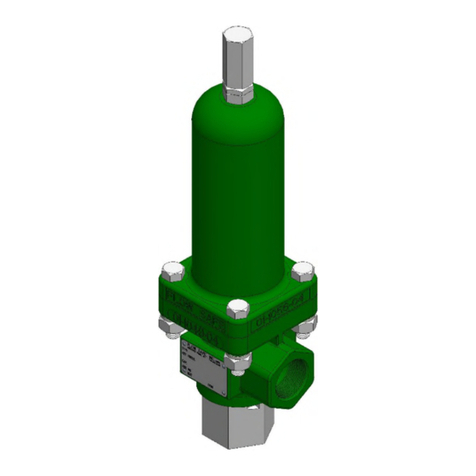
Flow Safe
Flow Safe F88 Series Instruction manual
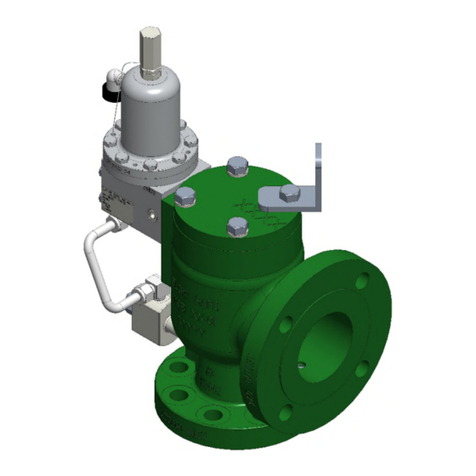
Flow Safe
Flow Safe F8000 Series Owner's manual
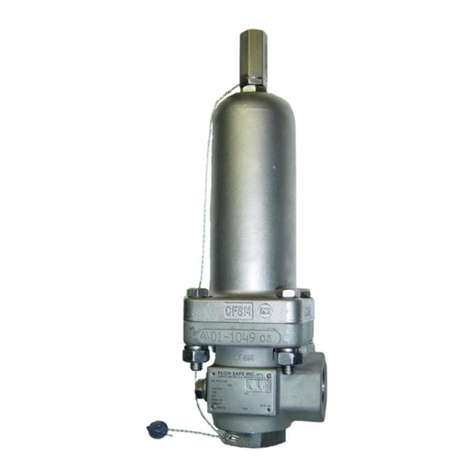
Flow Safe
Flow Safe F88 Series Instruction manual

Flow Safe
Flow Safe F70U Series Instruction manual
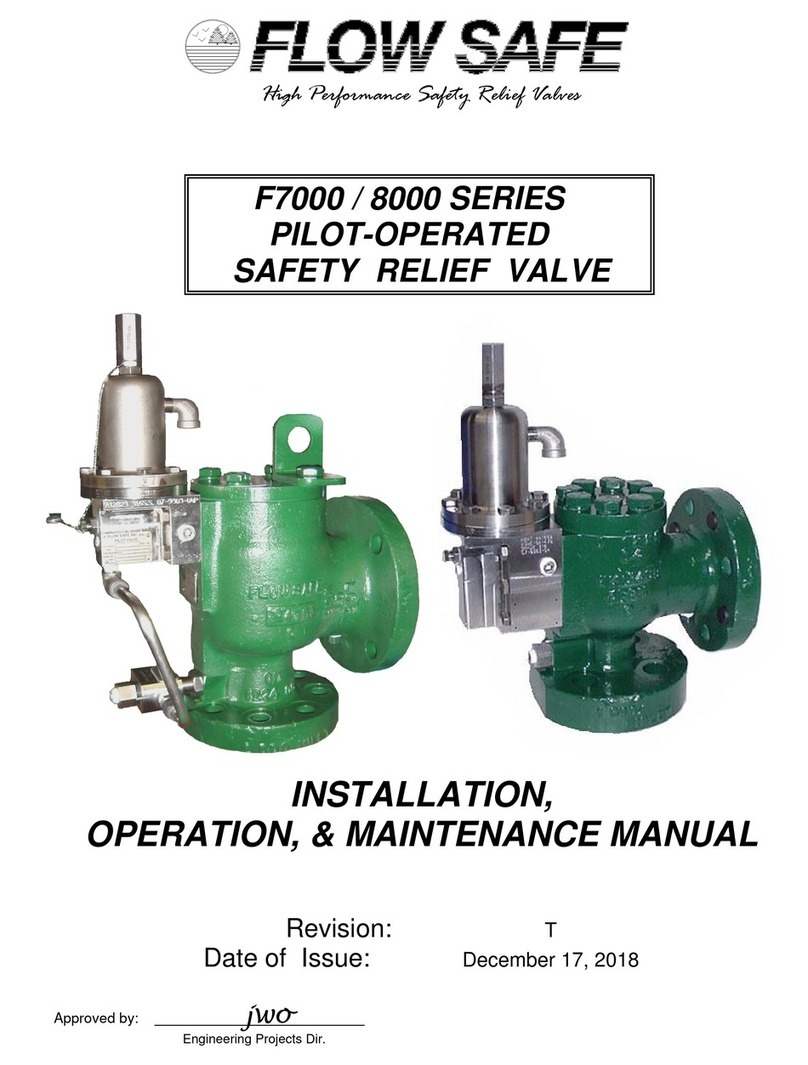
Flow Safe
Flow Safe F7000 SERIES Instruction manual
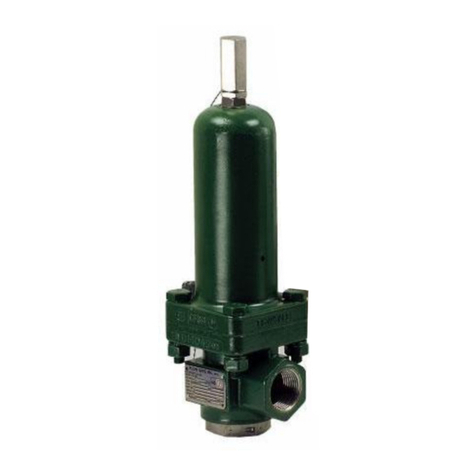
Flow Safe
Flow Safe F84L Series Instruction manual
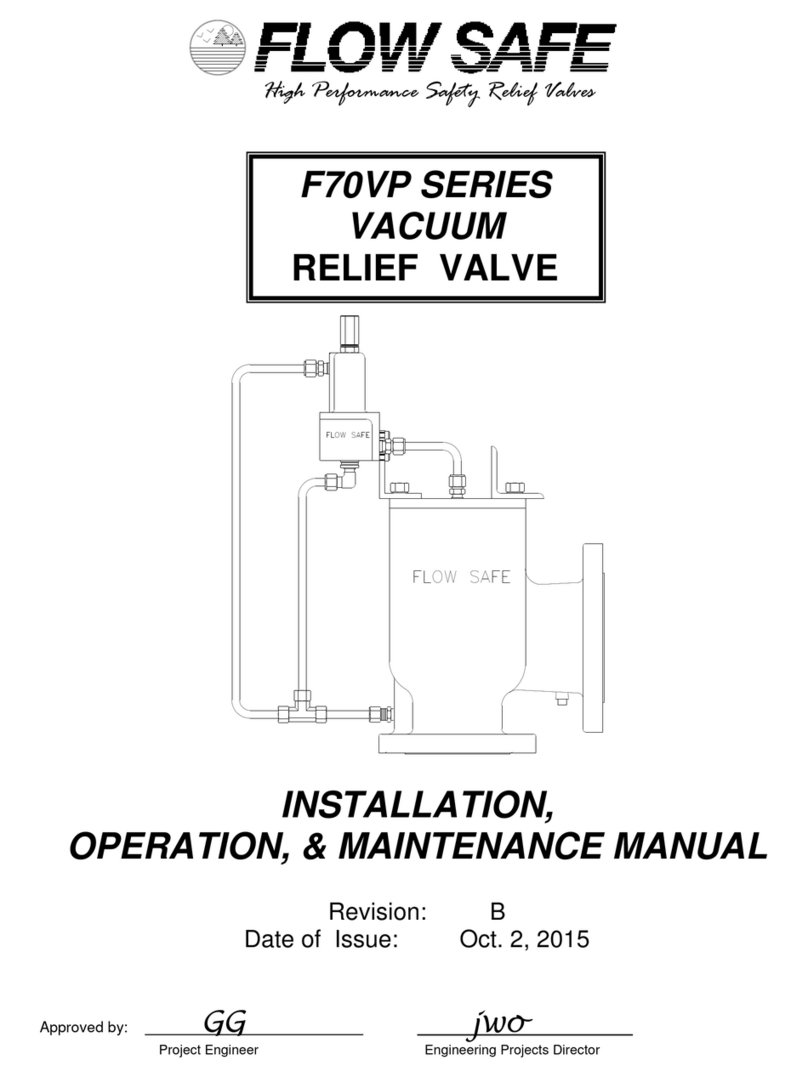
Flow Safe
Flow Safe F70VP Series Instruction manual
Popular Control Unit manuals by other brands
Inficon
Inficon LDS3000 AQ Original operating instructions

Azbil
Azbil NX-CB1 user manual
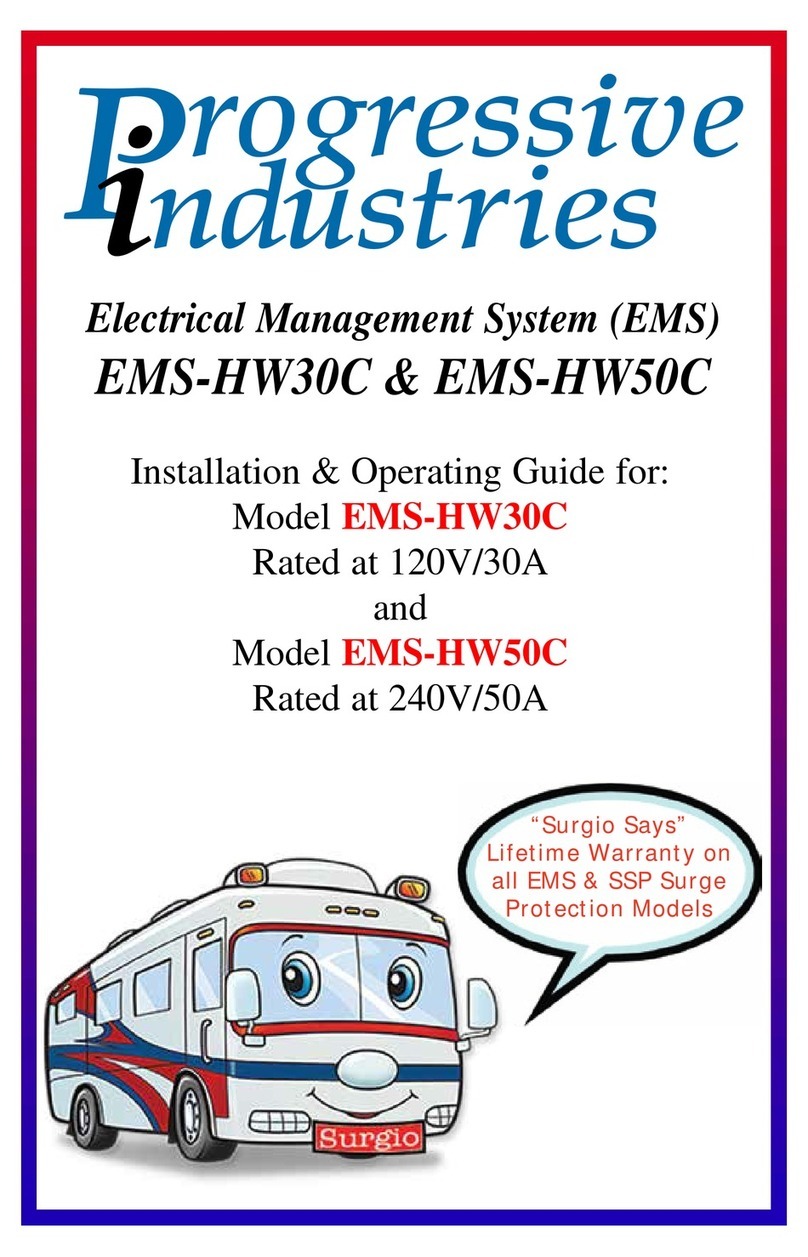
Progressive Industries
Progressive Industries EMS-HW50C Installation and operation
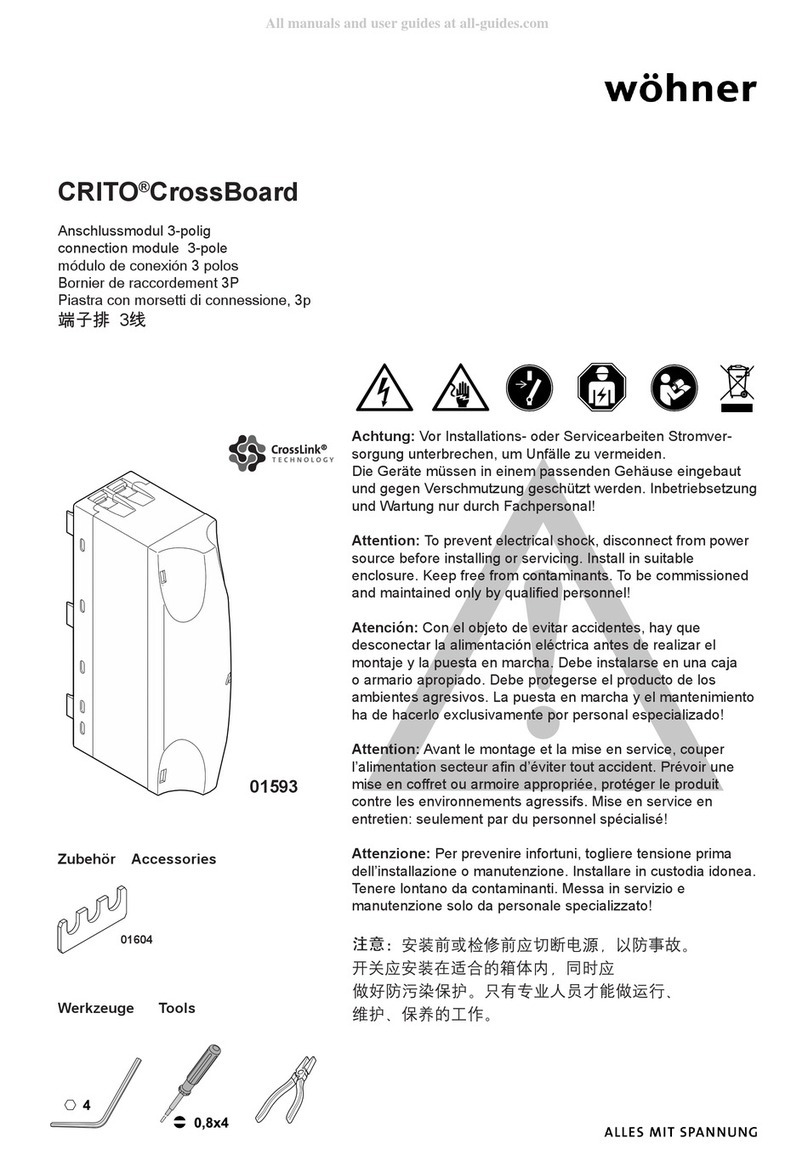
Wöhner
Wöhner CRITO CrossBoard manual
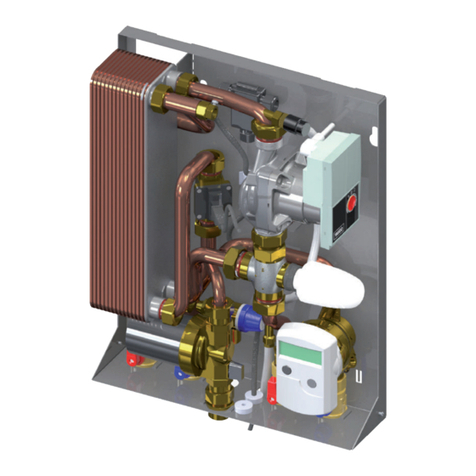
Lovato
Lovato T-FAST MINI Assembling instructions and maintenance
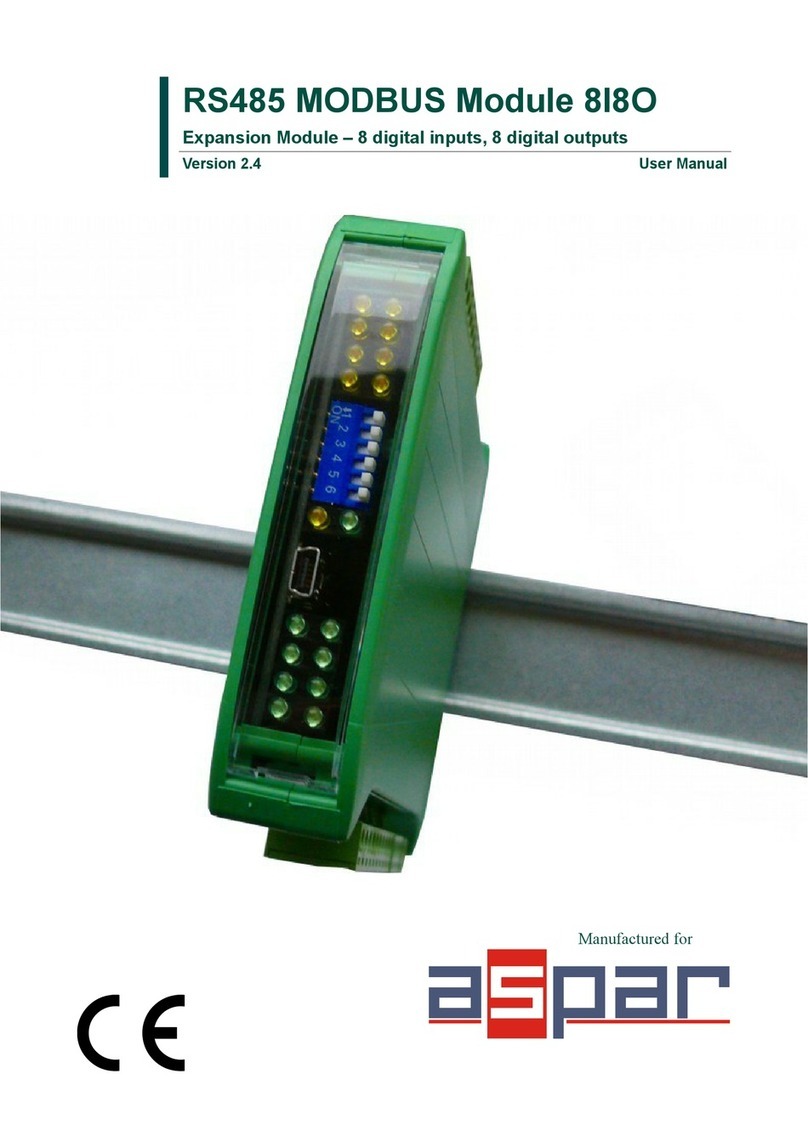
Aspar
Aspar RS485 MODBUS user manual

